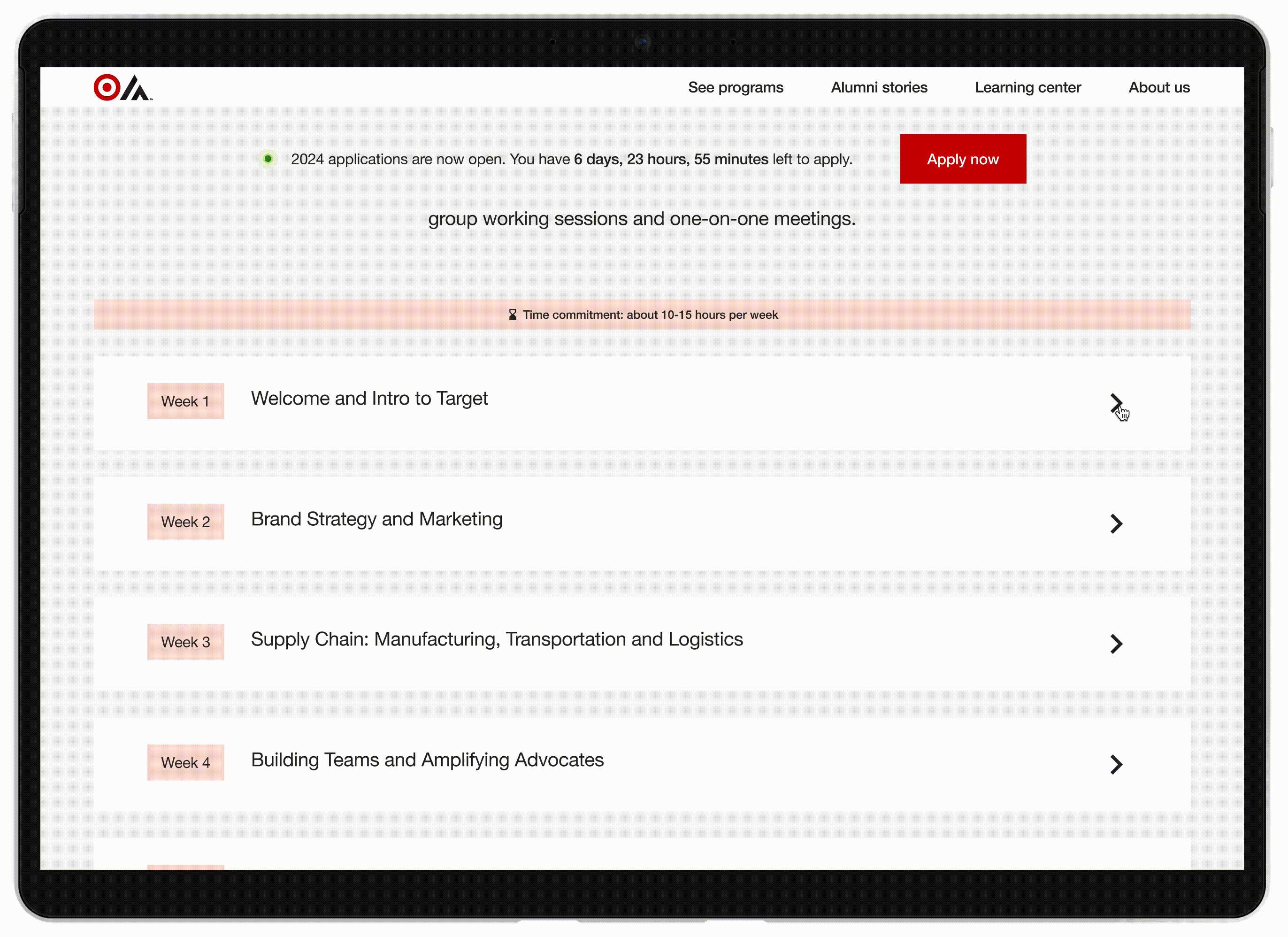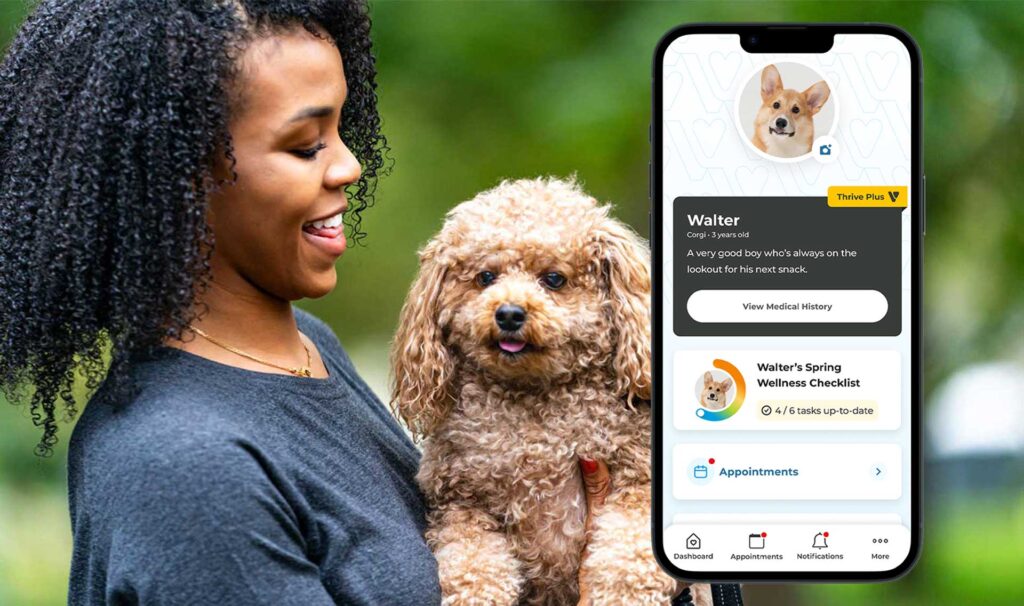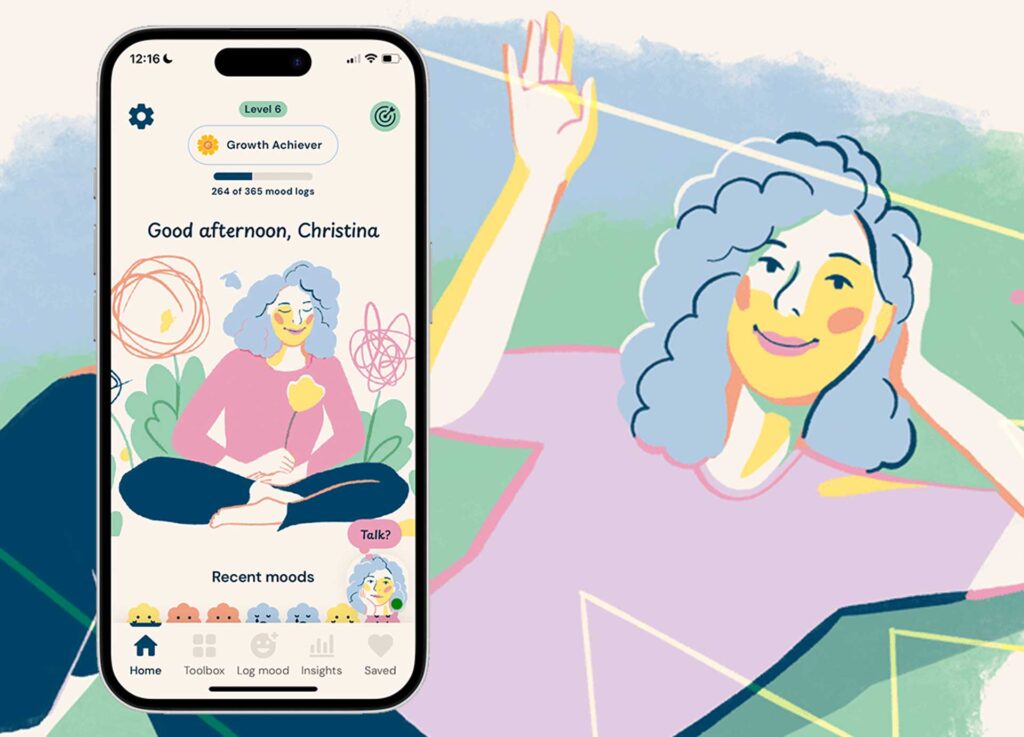The redesign brought key information closer to the surface, reducing scrolling and clicks so users could find what they needed faster and with less effort.
Growing Target Accelerators’ Lead Pipeline with a User-Centered Redesign
My role
- Lead UX/UI
- Content strategy
Industry
Retail
Description
Target Accelerators empowers product-based business founders with the tools, coaching, and connections to grow their brands, whether they’re ready to scale or just starting out.
I led the UX and content strategy for a website redesign that clarified program options, streamlined navigation, and surfaced key information sooner, helping users find what they need faster and driving more program applications.
The new site not only improved the user experience but also strengthened Target Accelerators’ ability to attract and convert high-quality leads, becoming a more effective tool for growing their founder pipeline.


To inform the redesign, we analyzed site analytics and heatmaps to understand where users were clicking and scrolling. This revealed which content they valued most and where engagement was dropping off.

I created a content map to align content hierarchy and goals with user and business needs, giving the team clarity before moving into design.

I partnered with the project strategist to run moderated usability tests with both past participants and founders new to the program, capturing insights from two distinct user groups.


I synthesized findings from these sessions, identifying key themes and insights that directly informed design revisions.

We found that users weren’t sure which program they qualified for and wanted program directors to make that decision. To resolve this, we unified the two program cards into a single section using the law of common region, visually reinforcing that the application would cover both paths. We also removed the duplicate “Apply now” button to reduce cognitive load and build user confidence in being placed appropriately.

Usability testing revealed that most users didn’t understand the terms “early-stage” and “mature,” which slowed their decision-making.

To support quicker understanding, we added tooltips defining each term, allowing users to get clarity without leaving the page.

There was an initial hypothesis that users wanted video content to learn about the programs. However, usability testing revealed that most users scrolled past the video, preferring to scan text for information. Many felt video took longer to consume and were hesitant to play audio depending on their environment. Based on these insights, we removed the video from the hero area and surfaced key program details immediately to help users access information faster.

We focused on surfacing the program’s founder benefits as clear, tangible outcomes—something the previous site lacked.

Users expressed a hesitation to apply because they didn’t know the program’s time commitment. To address this, we added a clear schedule and outlined the expected commitment, helping founders better assess their availability and feel more confident submitting an application.

I used progressive disclosure to streamline complex pages and make content easier for founders to process.

Founders were eager for resources, viewing free content via email as worth sharing their contact information. I used the goal-gradient effect to break up the application process and display progress, reducing overwhelm and increasing completion rates.

